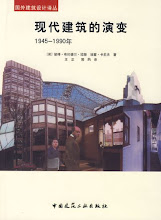Saturday 25 May 2013
The Architectural Consequences of the Textile Block
Another addition to the Ashgate Studies in Architecture series edited by Eamonn Canniffe
On Frank Lloyd Wright's Concrete Adobe: Irving Gill, Rudolph Schindler and the American Southwest by Donald Leslie Johnson
During the period of 1919-1925, Frank Lloyd Wright worked on five houses and a kindergarten in the metropolitan Los Angeles area using concrete blocks as the main building material. These have variously been described as being 'uniquely molded', 'woven like textile fabric' and it was perceived as a groundbreaking, modern or unprecedented construction process. There were moments when Frank Lloyd Wright himself claimed to have invented this system. Many have attempted to uphold his claim, while others said he borrowed from ancient buildings. For the first time, this book brings together Wright's declarations, the assertive support by others and the accuracy of inferences in order to determine the correctness of these claims. It tests their veracity including the possibility of feigned, imagined or made-up stories presented as proof. It examines technical developments for concrete blocks, both by Wright and others, before his experiences in Los Angeles began in 1919. It also analyses the manner of Wright's design process, as well as relevant pictorial and textual documents and a study of those extant buildings. The book provides a unique, in-depth and critical analysis of Wright's concrete block houses, set within their historical, biographical and theoretical contexts. In particular, it shows the full impact upon Wright of his contemporaries, architects Irving Gill and Rudolph Schindler. In doing so, it allows a full appreciation of Wright's, Gill's and Schindler's buildings beyond their architectonic and experiential qualities.
Subscribe to:
Post Comments (Atom)







No comments:
Post a Comment